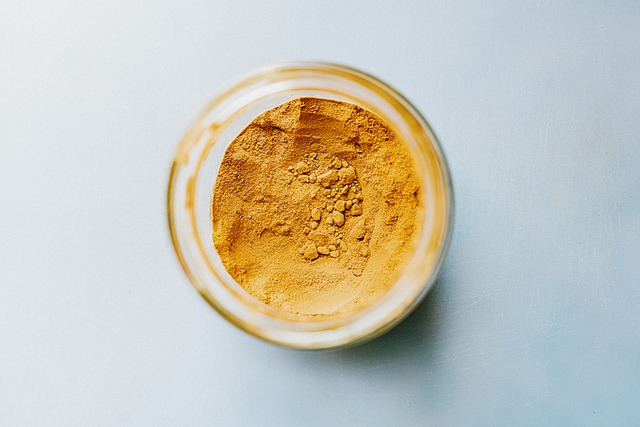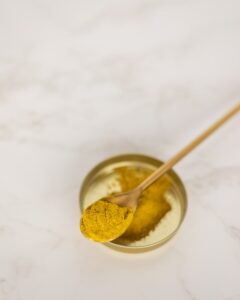In a world where chronic diseases and inflammatory conditions have become increasingly prevalent, the search for effective natural remedies is more crucial than ever. Among the plethora of options, turmeric stands out as a potent anti-inflammatory agent with a history deeply rooted in traditional medicine. The question that arises is: how does turmeric reduce inflammation in the body? This article delves into the science behind turmeric’s anti-inflammatory properties and explores its potential benefits for various health conditions, ranging from ulcerative colitis to cardiovascular diseases.
Understanding Turmeric’s Anti-Inflammatory Properties
The Role of Curcumin: Nature’s Gift to Combat Inflammation
To understand how does turmeric reduce inflammation in the body, we must first need to understand curcumin. At the heart of turmeric’s anti-inflammatory prowess lies curcumin, a bioactive compound renowned for its remarkable therapeutic potential. Studies have shown that curcumin inhibits the proliferation of inflammatory cells and suppresses the release of inflammatory cytokines, which are molecules responsible for triggering and sustaining inflammation. This double-edged action of curcumin makes it a promising candidate for tackling chronic inflammation, a pathological process that underpins numerous chronic diseases including rheumatoid arthritis, inflammatory bowel disease, and even some cancers.

Clinical Evidence: Turmeric’s Impact on Inflammatory Conditions
Turmeric’s Effect on Inflammatory Bowel Disease and Ulcerative Colitis
In the realm of inflammatory bowel diseases, particularly ulcerative colitis, turmeric has garnered attention as a potential therapeutic agent. Clinical trials and experimental studies have indicated that curcumin supplementation can significantly reduce inflammation in the colon, attenuating symptoms and promoting remission in patients suffering from ulcerative colitis. This effect is thought to be attributed to curcumin’s ability to modulate the innate immune response and inhibit the production of inflammatory mediators.
Turmeric’s Potential in Rheumatoid Arthritis and Joint Inflammation
Rheumatoid arthritis, a chronic inflammatory joint disorder, also falls within turmeric’s sphere of influence. As researchers delve in to funding answer how does turmeric reduce inflammation in the body, they found out that curcumin’s anti-inflammatory effects can help alleviate joint pain, swelling, and stiffness, enhancing the quality of life for individuals battling this condition. While more comprehensive clinical trials are needed to establish curcumin’s efficacy, the available evidence showcases its potential as an adjunctive treatment for rheumatoid arthritis.
How Does Turmeric Reduce Inflammation in the Body: Unraveling the Mechanisms
Curcumin’s Multifaceted Approaches to Combat Inflammation
Curcumin’s arsenal of anti-inflammatory mechanisms is vast and intricate. It not only directly inhibits the activation of inflammatory pathways but also exerts its influence on various cellular components involved in inflammation. By inhibiting angiogenesis, the process of new blood vessel formation crucial for sustaining inflammatory responses, curcumin strikes at the very heart of chronic inflammation. Moreover, curcumin induces apoptosis, or programmed cell death, in inflammatory cells, further curbing the inflammation cascade.

Beyond Inflammation: Turmeric’s Diverse Health Benefits
Cardiovascular Protection and Turmeric’s Impact on Heart Health
How does turmeric reduce inflammation in the body? The benefits of curcumin extend beyond inflammation reduction, encompassing cardiovascular health. Turmeric’s potential to lower blood sugar levels and improve lipid profiles has been documented, suggesting a protective role against cardiovascular diseases. By reducing oxidative damage and improving endothelial function, curcumin contributes to maintaining healthy blood vessels and preventing atherosclerosis.
Cancer Prevention and Curcumin’s Anti-Inflammatory Effects
Emerging research also explores curcumin’s potential to prevent and treat cancer. Its anti-inflammatory and antioxidant properties are thought to play a pivotal role in inhibiting the growth of cancer cells and suppressing chronic unpredictable mild stress, tumor progression. Studies conducted on various cancer types, including colorectal cancer and human prostate cancer, have shown promising results regarding curcumin’s ability to induce apoptosis and inhibit angiogenesis.
How Does Turmeric Reduce Inflammation in the Body: Integrating Turmeric into Lifestyle
Optimizing Turmeric Absorption and Bioavailability
While the promise of curcumin is enticing, its poor absorption in the body has posed a challenge. To address this, curcumin supplements often include piperine, a compound derived from black pepper, to enhance bioavailability. Additionally, curcumin phosphatidylcholine complex formulations have been developed to improve curcumin’s absorption, making it a more viable option for harnessing its anti-inflammatory potential.
Incorporating Turmeric into the Diet and Daily Regimen
Incorporating turmeric into daily life can be as simple as drinking turmeric supplements, sipping on turmeric tea or adding this golden spice to an array of culinary creations, like the iconic Indian curry. However, it’s essential to note that while dietary curcumin intake can contribute to overall health, therapeutic doses often require supplementation to achieve meaningful anti-inflammatory effects.
How Long Does It Take Turmeric to Reduce Inflammation?
The time it takes for turmeric to reduce inflammation can vary widely depending on several factors, including the individual’s health condition, the severity of inflammation, the dosage and form of turmeric used, and the body’s response to the compound. While some people may experience relatively quick relief, others might require more time to notice significant improvements.
Acute vs. Chronic Inflammation: The time it takes for turmeric to reduce inflammation may differ between acute and chronic conditions. Acute inflammation, such as a minor injury or a temporary flare-up, might respond more quickly to turmeric’s anti-inflammatory properties. On the other hand, chronic inflammation, which is often associated with long-term conditions like autoimmune disorders, might take a longer time to show noticeable improvements.
Dosage and Form of Turmeric: The dosage and form of turmeric can also impact how quickly inflammation is reduced. Turmeric is often available in various forms, including fresh turmeric root, ground turmeric spice, turmeric supplements (containing curcumin extract), and turmeric extracts. Supplements and extracts, which provide concentrated amounts of curcumin, may have a more rapid effect due to their higher bioavailability compared to consuming turmeric in its natural form.
Individual Variability: Just as with any natural remedy, individual responses can vary. Some people may be more sensitive to the anti-inflammatory effects of turmeric and notice improvements sooner, while others might take longer to experience the benefits.
Severity of Inflammation: The extent of inflammation can also influence the timeline. Mild cases of inflammation might respond more quickly, while more severe and deeply entrenched cases may require a longer duration of consistent use before significant relief is observed.
Consistency and Duration of Use: Achieving lasting results often requires consistent use over an extended period. Turmeric’s anti-inflammatory effects may build up gradually, so sustained use is more likely to yield noticeable benefits over time.
Combination with Other Treatments: It’s worth noting that in some cases, combining turmeric supplementation with other recommended treatments or lifestyle modifications could potentially enhance the speed and effectiveness of inflammation reduction.
Given these factors, it’s challenging to provide a specific timeframe for when turmeric will reduce inflammation. Some individuals might experience relief within a few weeks of regular use, while others might need several months to see substantial improvements. If you’re trying to understand how does turmeric reduce inflammation in the body, considering using turmeric for its anti-inflammatory properties, it’s advisable to consult with a healthcare professional, especially if you have an underlying health condition or are taking other medications. They can guide you on the appropriate dosage, form, and duration of turmeric use based on your individual health profile.
How Does Turmeric Reduce Inflammation in the Body? – Final Thoughts
How does turmeric reduce inflammation in the body? In a world where chronic inflammation serves as a common thread linking diverse health conditions, turmeric’s prominence as a natural compound with potent anti-inflammatory properties shines bright. The mechanisms through which curcumin combats inflammation are multi-faceted and intricate, offering potential relief for those grappling with conditions ranging from ulcerative colitis to cardiovascular diseases. As research continues to unfold, turmeric holds the promise of not only addressing chronic inflammation but also ushering in a new era of complementary and alternative medicine, where nature’s gifts are harnessed to improve human health.
Incorporating turmeric into one’s lifestyle, whether through dietary consumption or targeted supplementation, could pave the way for a healthier future, where chronic diseases are managed through the remarkable anti-inflammatory effects of this medicinal herb. As science continues to uncover the depths of turmeric’s potential, individuals and healthcare professionals alike are presented with a natural, holistic approach to promoting well-being and combating the scourge of chronic inflammation that plagues modern society.

